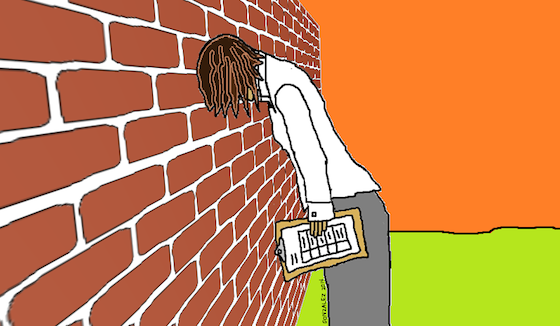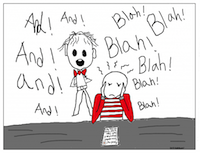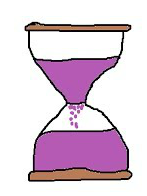3 Habits of Highly Effective Coaches
https://fullfocusplanner.com/effective-coaches/
How to Step Back, Ask Questions, and Get Results
How to Step Back, Ask Questions, and Get Results
If you’ve ever had the benefit of a great coach, you know just how powerful coaching can be. But leaders know it can sometimes be difficult to coach the people on your own team.
It’s one of the main reasons people are reluctant to delegate work in their Drudgery and Disinterest Zones. It takes so much time and effort we’re tempted to throw in the towel, even though it would save us tons of time in the long run.
But it doesn’t have to be so frustrating.
I recently spoke with coaching expert Michael Bungay Stanier about his new book The Coaching Habit, which can help us all to get the most out of coaching for the least effort.
“Your job as a leader and a manager is to help people become more competent, more confident, more capable, more autonomous,” he says. “Because that helps them, but honestly it helps you. Because I’m betting nobody here is going ‘Well thank goodness I can just coach people all day because I’ve got nothing else to do.'”
Bungay Stanier warns there’s something standing in the way of good life coaching: our own instincts. We often approach coaching in exactly the wrong way.
There are three habits we must adopt to make coaching better for us, better for those who we are coaching, and better for our organizations: give less advice, ask questions instead, and ask the kind of questions that help our teammates learn and grow.
1. Give Less Advice
The first change is something we need to stop doing, or at least drastically slow down. When members of our team come to us seeking feedback, we jump in with advice. That’s the wrong reflex to have, but it’s all too common.
“We are all advice-giving maniacs,” Bungay Stanier cautions. “We love it. We don’t even know what the problem is, but we’ve got some thoughts about how to go around fixing it.”
All this rampant advising “feels pretty good,” he admits. It flatters us, and sometimes it even solves specific, small problems. But it creates a bigger problem: Our teams, those who we are coaching, become too dependent on us for answers. It stymies their development and it frustrates us as more and more requests for help mount.
The blame here often lies with ourselves. Our quick answers have sent the wrong message, training them to rely on us and not work things out for themselves. It’s “debilitating for them, exhausting for you,” Bungay Stanier says.
The first habit we must adopt is becoming slow to offer advice. What do we offer instead?
2. Ask Questions Instead
Bungay Stanier looks to science for how our brains are wired for success or failure. He learned,
Neuroscience says that if people are feeling autonomous, feeling that they are important, feeling like they are clear on what’s happening, feeling like you’re with them, they’re much more likely to stay engaged and actually bring the best of themselves.
Asking questions is the best way to promote those feelings. That’s the second habit.
When a team member pops in your office or Slack channel to request help solving a problem, probe them first. Say, “That’s a great question. Before I share my ideas, what ideas do you already have?” and listen.
I’ve done this myself and so often it works. People usually come up with the answer that I would have given them, but it’s ten times more powerful because they come up with it on their own. They feel brilliant. They feel smart. And the problem gets solved.
But what if their first answers clearly miss the mark? Should you jump right in with the right one? No.
3. Ask Better Questions
Try something else first. Ask, “What else could you do?” Bungay Stanier calls this the “best coaching question in the world.” The point isn’t to grill your team member but to force them to expand their thinking on the subject and to show them that you actually value their thinking and would like for them to do more of it.
Asking questions designed to help team members learn and grow is the third habit.
Some expert coaches go so far as to take a purely Socratic approach. Bungay Stanier doesn’t say that. He acknowledges that your experiences are useful too, and can be shared. But he says it is hugely important that we ask questions and that we learn to ask better questions as we go.
“People do not learn when you tell them stuff,” says Bungay Stanier. “It goes in one ear. It goes out the other ear pretty quickly.”
Experience is a great teacher, but it’s limited by itself. Our people really grow “when they have a moment to reflect on what just happened.” You can help put them in that state of mind by asking a very specific question: “What was most useful or most valuable about this for you?”
It’s a great question in an unbelievably useful book. And there’s so much more to it than what I can fit in one blog post. These days coaching is my No. 1 job. If I had read The Coaching Habit earlier in my career, I’m confident I would have seen better, faster results with far less frustration.
Which of these three habits do you need to adopt in your coaching?


 lternative: Whenever possible, address off-task behavior in private. Some teachers silently place a post-it note on the student’s desk to signal that a problem has occurred, then add a check mark for every subsequent infraction.
lternative: Whenever possible, address off-task behavior in private. Some teachers silently place a post-it note on the student’s desk to signal that a problem has occurred, then add a check mark for every subsequent infraction. When you distribute a handout to students, do you give them quiet time to actually read it? Or do you keep talking, “going over it” and constantly interrupting them to the point where they can’t process any of it? When you do this, you guarantee that students will either skip over something important on the document, or miss a vital bit of information you gave verbally. The brain can’t do both at once.
When you distribute a handout to students, do you give them quiet time to actually read it? Or do you keep talking, “going over it” and constantly interrupting them to the point where they can’t process any of it? When you do this, you guarantee that students will either skip over something important on the document, or miss a vital bit of information you gave verbally. The brain can’t do both at once. When a student gets off-task, an ineffective teacher will waste five minutes lecturing her about it. This not only makes you lose valuable instructional time, it also annoys the heck out of the other students, who are forced to sit and watch.
When a student gets off-task, an ineffective teacher will waste five minutes lecturing her about it. This not only makes you lose valuable instructional time, it also annoys the heck out of the other students, who are forced to sit and watch. It’s natural to give your energy to misbehaviors, to only comment when something goes wrong, but you’ll get more cooperation if you give equal (or more) attention to the good behaviors, especially when it comes to students who have trouble with self-control.
It’s natural to give your energy to misbehaviors, to only comment when something goes wrong, but you’ll get more cooperation if you give equal (or more) attention to the good behaviors, especially when it comes to students who have trouble with self-control.


